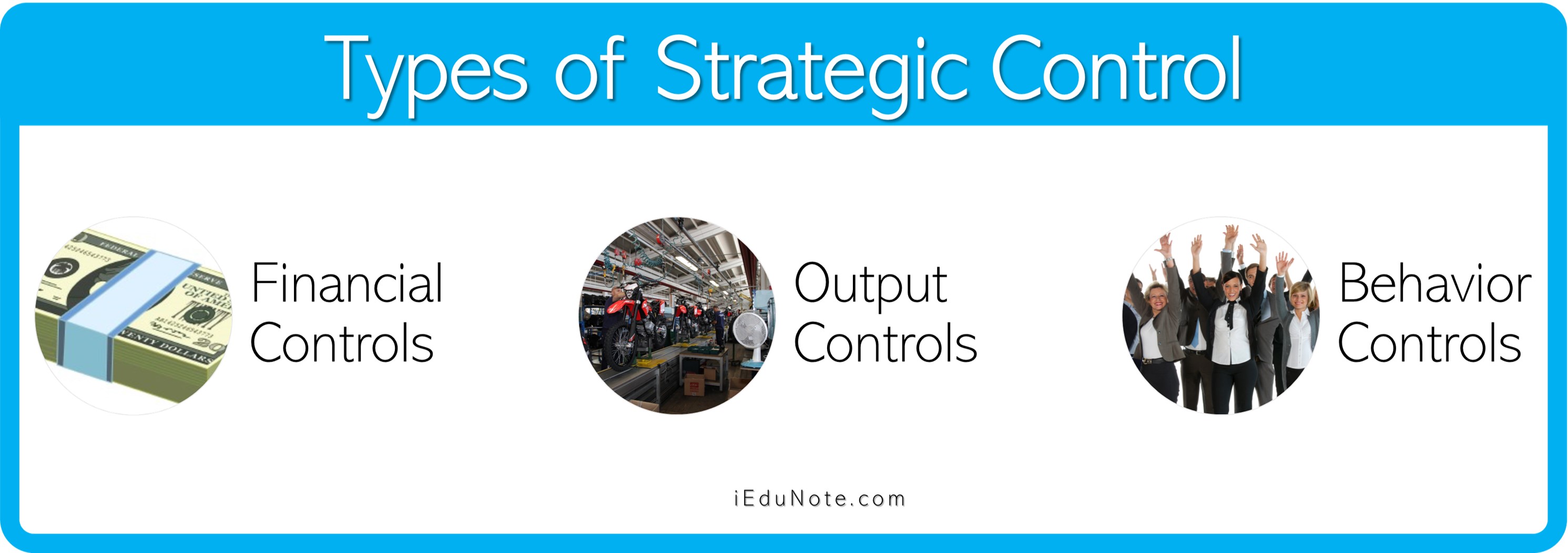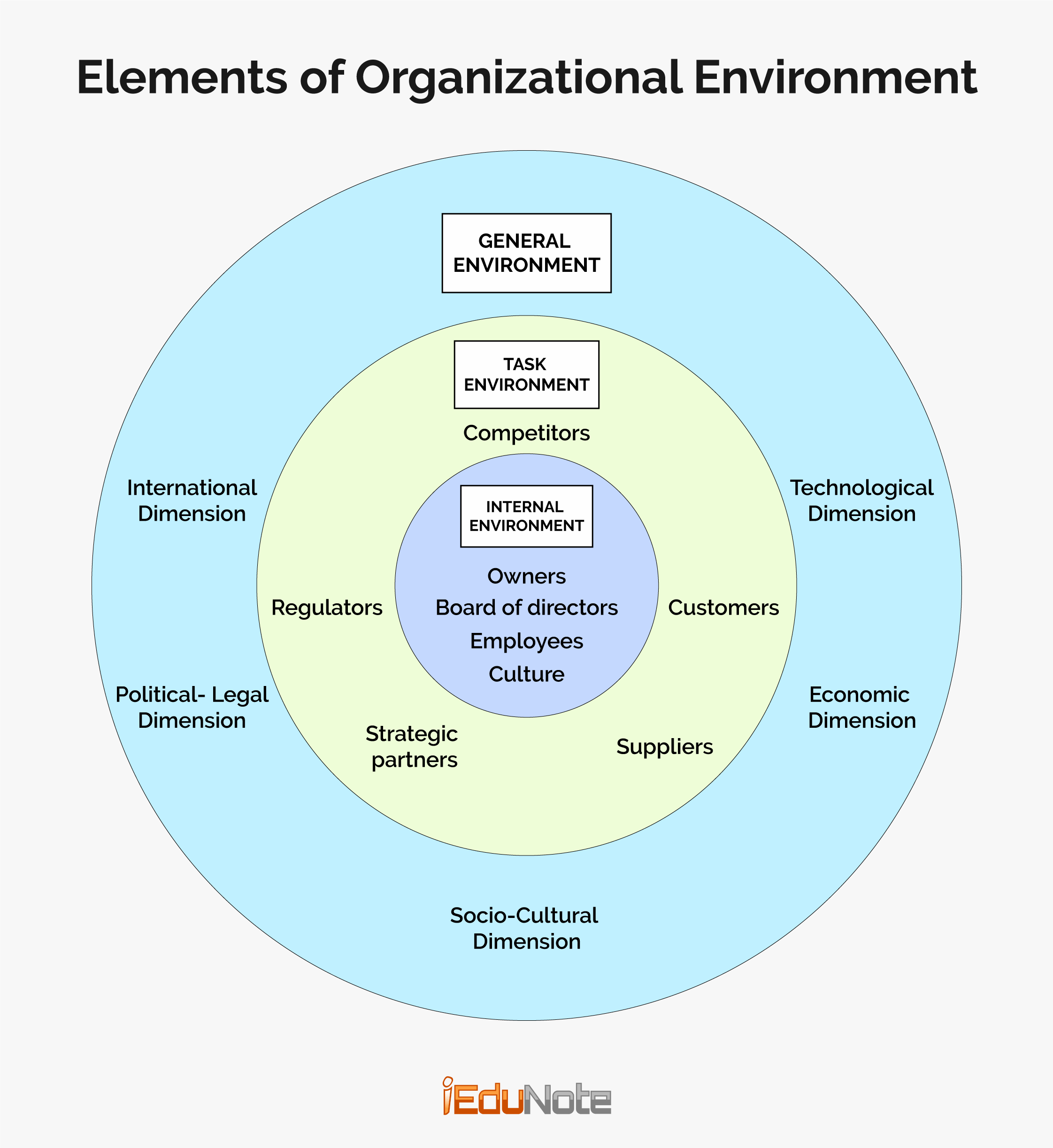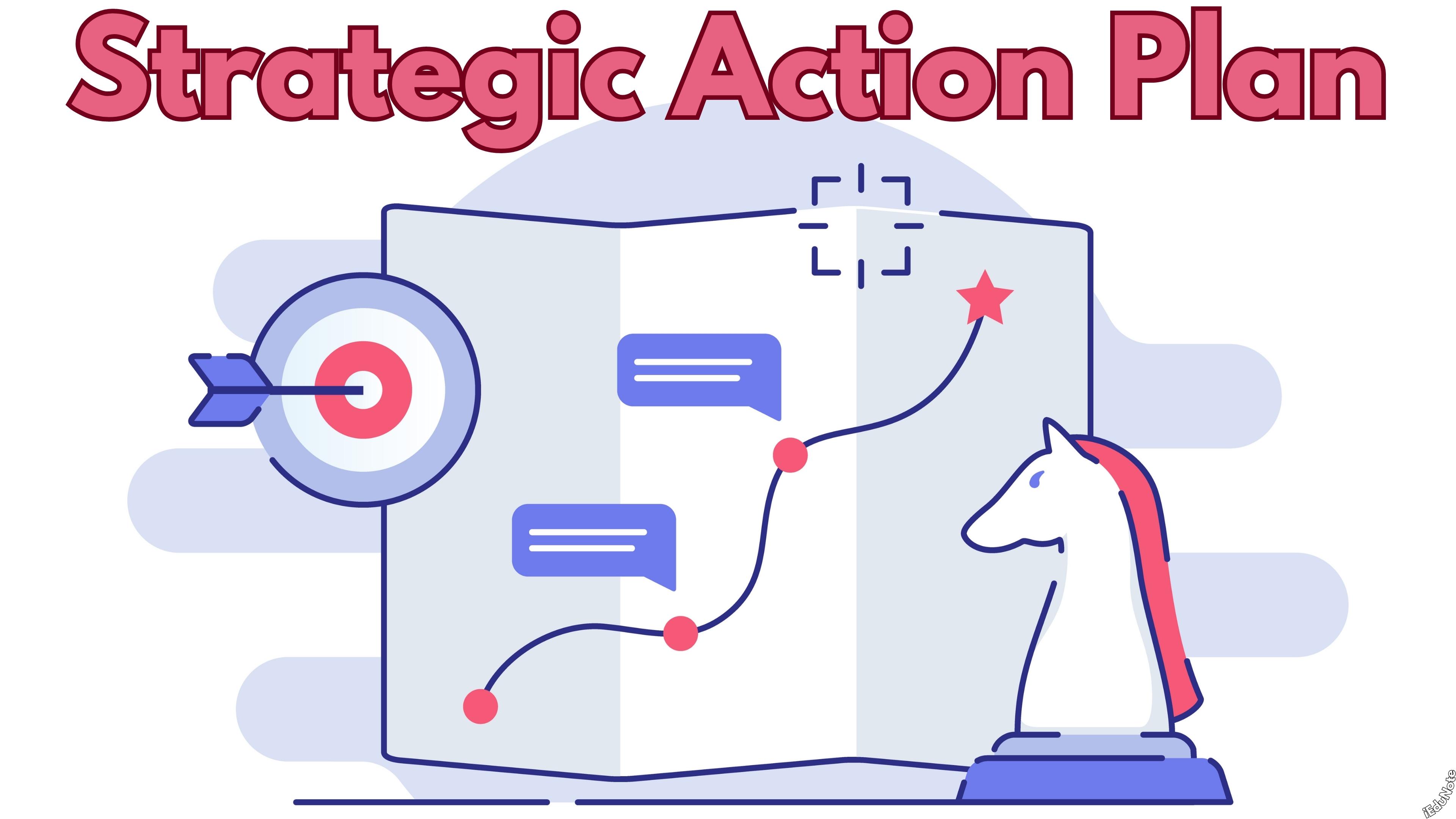Learn 3 types of strategic control: financial, output, and behavior controls. Enhance efficiency, quality, innovation, and customer responsiveness.
Strategic Control
An organization needs to integrate its strategy and control systems to ensure that strategy helps the organization in achieving its goals.
Strategic control specifically aims at ensuring that the organization is maintaining an effective alignment with its environment and moving toward achieving its strategic goals.
Griffin has indicated that strategic control focuses on five aspects of Organizations – structure, leadership, technology, human resources, and information and operational control systems.
An organization cannot run without an effective evaluation and control system. Control refers to any process adopted; by managers to align the actions of people and systems of the organization with its goals and interests.
Control is, in fact, regulation of the activities of an organization so that the managers and other employees can have some kind of indication regarding performance about goals.
Sound control systems help an organization become effective and efficient. Control systems can be defined as ‘evaluative and feedback processes to let people know their managers are paying attention to what they do and can tell when undesired deviations occur.’
Control thus makes a comparison of the organization in terms of its performance – where it is now and where it is expected to be. It also gives a signal to managers for any corrective actions.
For example, A Courier Service has a performance goal of delivering 100; percent of its parcels on time to its customers.
The company finds that its on-time delivery has fallen to 98 percent, the control system would signal the problems to managers. The managers can then undertake appropriate measures to correct the problem to raise its delivery performance by over 98 percent.
Importance of Strategic Control
Strategic control systems provide managers with the tools to regulate and govern their activities.
In strategic control, managers first select strategy and organization structure and then create control systems to evaluate and monitor the progress of activities directed toward implementing strategies.
Finally, they adopt corrective actions through adjustments in the strategy if variations are detected.
Strategic controls can be both proactive and reactive. When proactive, control systems help keep an organization on track, anticipate future events, and respond to opportunities and threats.
When reactive, strategic controls detect deviations after events and then take corrective actions.
Strategic control systems further help managers achieve superior efficiency, quality, innovation, and responsiveness to customers. Strategic managers can measure efficiency by comparing the total inputs with the total outputs (how many units of inputs are used to produce a unit of output). Strategic managers create a control system to monitor the quality of products.
When customers’ complaints are nonexistent or negligible arid, customers hardly return the product (such as machinery/equipment) for repair, and managers indicate the quality of products.
The strategic control system can also help encourage the employees to think about innovation through the decentralization of authority/empowerment of employees and monitoring the performance of each workgroup/team.
Lastly, the strategic control system makes employees more responsive to customers by evaluating and monitoring employees’ behavior and contact with customers.
3 Types of Strategic Control

Financial Controls
Financial control systems are concerned with the financial resources of an organization. Financial resources are regularly flowing into the organization and out of the organization.
The organization, for internal use or other reasons, holds some financial resources. Managers use financial control systems to measure a company’s financial performance.
For effective financial control, they establish financial goals (e.g., growth, profitability, returns to shareholders) and then measure the actual achievement of those goals.
The most popular financial control tools are budgetary control, financial statements, ratio analysis, and financial audits. Budgetary control is implemented using a budget, a plan expressed in numerical terms.
Although a budget may be expressed in quantitative terms (units of output, time etc.), a budget (annual or quarterly, or monthly) is usually expressed in financial terms.
Managers may develop budgets for the entire organization or individual departments and divisions. They use budgets for measuring performance.
Budgets also help them make comparisons from year to year and across departments and divisions. Financial statements mainly include a balance sheet, income statement, cash flow statement, and funds flow statement.
Ratio analysis is concerned with calculating financial ratios to assess the financial health of an organization. The important ratios that are usually used as parts of financial control include liquidity ratios, debt ratios, coverage ratios, and operating ratios.
Financial audits include an internal audit by an organization’s staff and an external audit by qualified chartered accountant firms.
Output Controls/Operations Control
In the case of the output control system, managers forecast performance goals for each unit and employee. They forecast the actual performance of the units’ end employees.
Lastly, they compare the actual performance against the goals already set for them.
When the performance of employees or units is linked to the reward system, the output control itself provides an incentive structure for employee motivation in the organization.
Output control may take two forms; screening control and position control.
The first one concerns meeting standards for product or service quality during the production/performance process. The latter deals with the quality of products after the completion of the transformation process.
Behavior Controls
A behavior control system refers to a comprehensive system of rules and procedures. These are prescribed to direct the behavior/actions of employees at each level of the organization. Rules and procedures standardize the way of reaching goals.
Two forms of behavior control are;
- Operating Budgets.
- Standardization.
The operating budget includes the allocations of resources that need to be used for achieving goals by managers. Most commonly, managers at one level allocate to managers at a lower level a specific amount of resources to use to produce goods and services.
Managers’ efficiency .depends on to what extent they can stay within the allocated resources, i.e., the budget.
Standardization denotes the degree to which a business unit specifies how decisions are to be made so that employees’ behavior becomes predictable.’
Inputs (things that are used to produce goods or services such as raw materials, parts, and labor), conversion activities (programming work activities so that they are done the same way time and again), and outputs (performance characteristics of finished products or services) can be standardized in a business unit.
All these are parts of behavioral control. Successful strategy implementation requires, among others, a control system that matches the organization’s strategy.
Strategic managers should ensure that financial and output controls are supplemented with behavior controls to efficiently achieve goals.
Monitoring
Strategy implementation requires a framework both for monitoring various actions undertaken to implement the strategic plan and offering recommendations to make adjustments to the actions to fulfill the organization’s vision better as outlined in the plan.
The framework for monitoring provides a means for measuring the effect of each action, identifies participants and their roles in monitoring the actions, lays out a time frame for monitoring, a specifies how the monitoring program could be documented.
Information obtained from the monitoring program will be used to recommend to decision-makers what changes the strategic plan may need to attain specific objectives in the plan.
The management and staff of the organization will be involved in monitoring activities.
Evaluation Plan
This strategic plan requires an evaluation plan that would concentrate specifically on whether the objectives already determined would have been achieved and whether it has made an impact.
In addition to monitoring the plan activities, CMS will undertake both ‘ongoing evaluation’ to assess the progress of activities and ‘impact evaluation’ to assess the impact of the activities under this plan.
Evaluation needs to be carried out with the expectation that it would provide useful information to several audiences, including the shareholders/owners.
Evaluation of the planned activities is expected to help in assessing whether the progress and impact of the activities/programs are likely to be sustainable in the long term and what could affect sustainability.
The Timing of Evaluation and the Ways of Using Results
An annual evaluation during the whole period of the strategic plan and an impact evaluation at the end of the plan would be worthwhile to gauge the progress of various plan activities and the overall impact.
Methods of Information Collection and Analysis of Information
The organization can use such methods for data collection as a review of existing documents (e.g., plan documents, surveys are special studies, CMS journals, and other publications), use of information from the monitoring system, surveys with set questionnaires, interviews (individual and group), observation, meetings, discussions and workshops, tests (e.g., in training), etc.
The evaluators need to use quantitative and qualitative methods to analyze information.
Output of Evaluation
The output of evaluations will have to be produced in terms of reports written in the clearly understood language.
The evaluators are to provide recommendations based on the contents of the evaluation reports period the recommendation to at least be related to;
- What causes of action should be taken,
- how they should be implemented,
- who will implement them and when,
- what constraints are likely to be involved,
- what will be needed to make sure the recommendations are acted upon.

